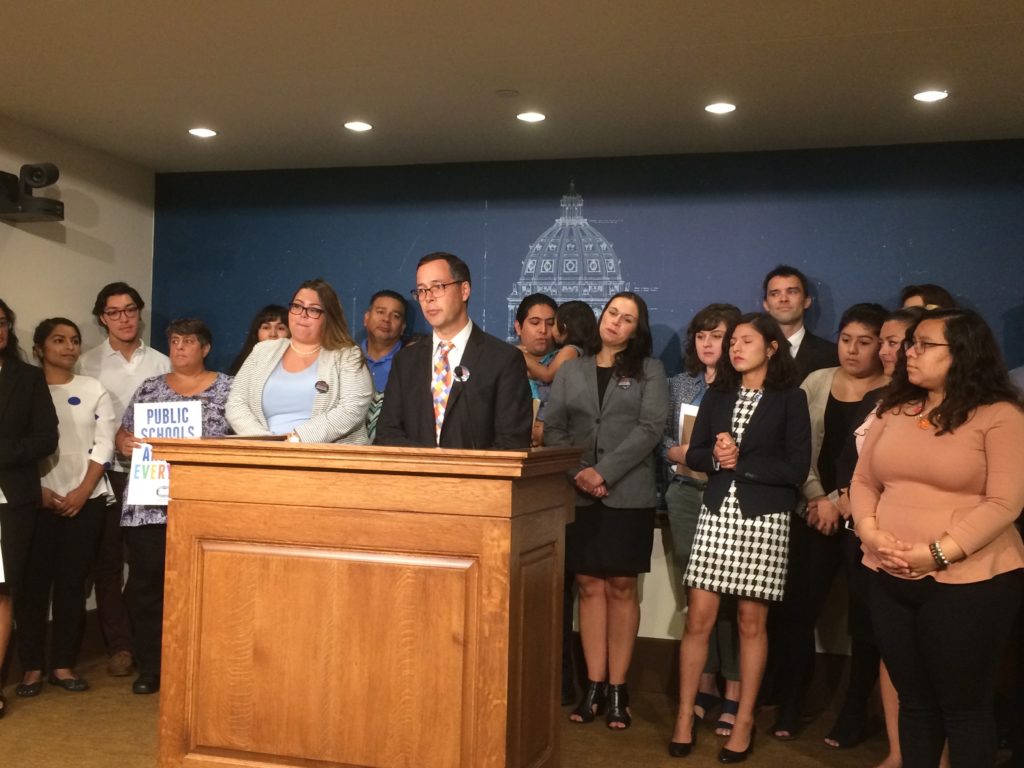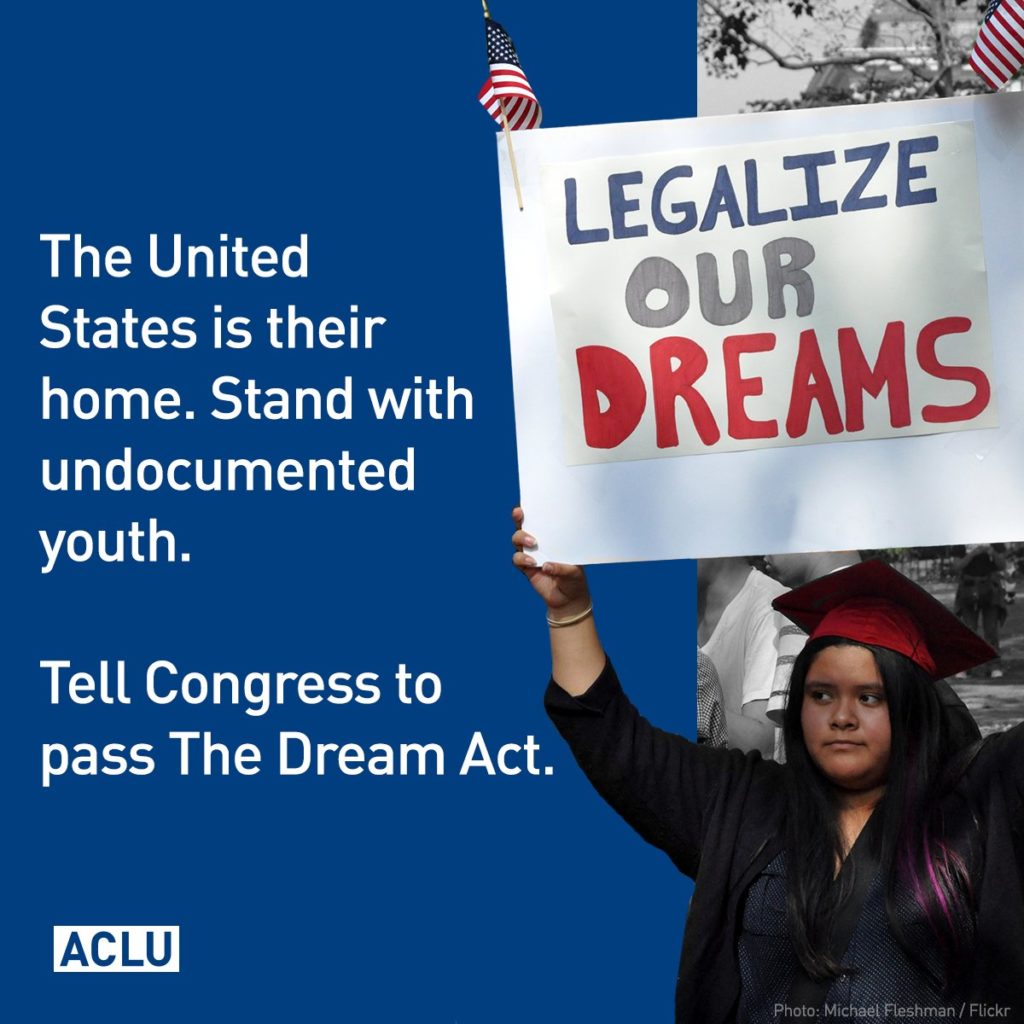
#WinterIsHere and not just on Game of Thrones. Might not look like winter outside, but a bitter cold wind is blowing out of Washington these days for Juventino Meza, and for other Dreamers.
“A piece of paper has never defined me and having it be taken away will be hard but I’ve been there before,” Juve wrote recently. “We have been there before. Many are there now. What we do under these circumstances is important and I hope we choose to fight like hell for young people and our entire families- for ALL of us. I’m ready for what’s to come. I hope you are too.”
Juve has been fighting for years. After growing up in Jalisco, Mexico, he came to Minnesota as a fifteen-year-old. Besides adjusting to a new language and culture, he coped with high school bullying that targeted his immigration status and his sexual orientation. High school was tough, but Juve was tougher. He led student organizing for the Minnesota Dream Act, which passed during his senior year, and won a scholarship to attend Augsburg College.
Juve was the first in his family to go to college. His father and other relatives worked construction, and older siblings dropped out of high school. Interviewed by MPR in 2008 for an article about first-generation college students, he said:
“A lot of people also have generalized things like ‘Oh, you Mexicans are really hard workers.’ But I like to think of myself as ‘No, I’m a lazy bum’ or ‘I like to sit and read.’ And when that actually takes you further than working so hard, I feel like I’m capable just like anyone else, to be able to become a CEO or start my own organization.”
While still in college, Juve co-founded and became the first executive director of NAVIGATE-MN, a non-profit organization that works on behalf of undocumented youth. After graduating from college, he worked as a policy coordinator for the Citizens League, was a Humphrey School of Public Affairs public policy fellow, worked for the Minneapolis Pubic Schools, and is now enrolled in Mitchell Hamline School of Law.
“I’ve lived in the U.S since I was a teenager and only have had DACA for less than 5 years,” Juve wrote recently. “I went to college without the Minnesota Dream Act or DACA or access to health insurance. My entire adulthood has been managing to survive the awfulness of racism, homophobia, and anti-immigrant prejudices in this country and find hope every single time… and sometimes doing something good with others.”
Along with more than 6,000 young immigrants in Minnesota and more than 800,000 across the country, Juve now has DACA status – Deferred Action for Childhood Arrivals. His organizing and advocacy work was part of the push that led President Obama to establish DACA in 2012, and the Minnesota legislature to pass the Minnesota Dream Act in 2013.
DACA is not a permanent status, but has been renewable every two years since 2012. DACA recipients do not have a path to permanent residence or citizenship, but do have temporary protection from deportation and work permits. Now President Trump is considering ending DACA, a move that Juve says would cause “a lot of unnecessary pain.”
Juve is still working with NAVIGATE-MN, organizing and advocating and offering help and support. Some of the resources he recommends, now that #WinterIsHere are:
- What Do I Need to Know if the DACA Program Ends? (August 28, 2017): https://www.ilrc.org/what-do-i-need-know-if-daca-program-en…
- UndocuHealing Project: http://www.undocuhealing.org/elevating-the-soul-guide.html
- National Suicide/Crisis Hotline:
1-800-273-8255
Crisis Text: 741741 - Also know that even if your DACA is taken away, there are other ways to go to college and legally work:
– In Minnesota, the MN Dream Act remains intact. Some provisions that provide benefits over working requirements may be affected (work study) but overall, the program remains intact. ohe.state.mn.us/mndreamact/
– You can become an entrepreneur and create your own company–your company gets hired. Reach out to ledc-mn.orgfor more information. - Orgs to support:
Navigate MNnavigatemn.org
www.ilcm.org - Take action via Immigrant Law Center of Minnesota:
http://www.congressweb.com/ILCM/33








 The Dreamers – young people who grew up here after being brought to the United States as children — are under attack again. After Congress tried and failed to pass the Development, Relief, and Education for Alien Minors (DREAM) Act over and over again, President Barack Obama acted to protect these young people. In 2012, he established the Deferred Action for Childhood Arrivals (DACA) program. Young people who qualified for DACA received temporary protection from deportation and permission to work, renewable under new presidential orders every two years.
The Dreamers – young people who grew up here after being brought to the United States as children — are under attack again. After Congress tried and failed to pass the Development, Relief, and Education for Alien Minors (DREAM) Act over and over again, President Barack Obama acted to protect these young people. In 2012, he established the Deferred Action for Childhood Arrivals (DACA) program. Young people who qualified for DACA received temporary protection from deportation and permission to work, renewable under new presidential orders every two years.